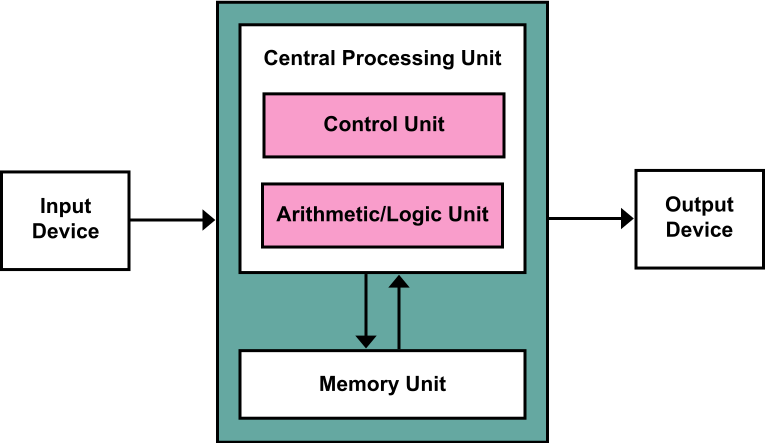
This architecture stores the program data and the instructions in the same memory unit.

The basic elements are:
The term "von Neumann architecture" has evolved to refer to any
stored-program computer in which an instruction fetch and a data operation
cannot occur at the same time (since they share a common bus). This is
referred to as the von Neumann bottleneck, which often limits the performance
of the corresponding system.[3]
Because the single bus can only access one of the two classes of memory at a
time, throughput is lower than the rate at which the CPU can work. This
seriously limits the effective processing speed when the CPU is required to
perform minimal processing on large amounts of data. The CPU is continually
forced to wait for needed data to move to or from memory. Since CPU speed and
memory size have increased much faster than the throughput between them, the
bottleneck has become more of a problem, a problem whose severity increases
with every new generation of CPU.
This architecture is simpler than the Harvard Architecture which includes a dedicated set of addresses to host the program instructions, and another set of addresses plus data buses for reading and writing to memory.